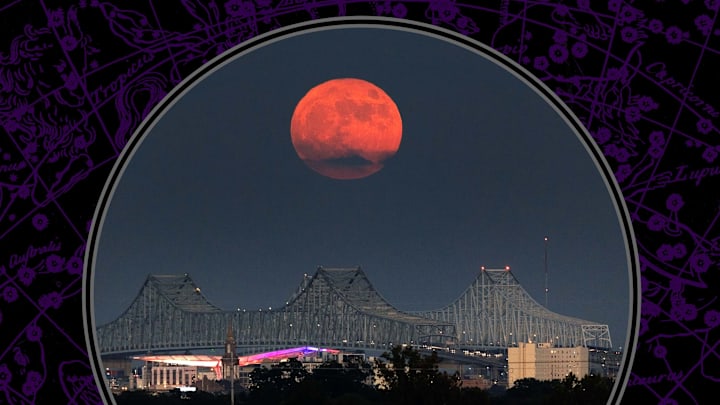Even if you’re just a casual astronomy fan, you’ve likely heard the common nickname of September’s full moon. The harvest moon is the full moon that falls closest to the fall equinox, and it’s associated with festivals celebrating the arrival of autumn. The harvest moon in 2023 is also the fourth and final super moon of the year. Here’s how to catch it.
What Is a Harvest Moon?
You may have heard that the harvest moon is special because it appears larger and darker in the night sky. This may be true depending on what time of night you look at it, but these features are not unique to the harvest moon.
Throughout the year, the moon rises on average 50 minutes later each night than it did the night before. This window shrinks in the days surrounding the fall equinox. In mid-latitudes, the moon will rise over the horizon only 25 minutes to 30 minutes later night after night. This means the moonrise will occur around sunset several evenings in a row.
So what does this mean for the harvest moon? If you’re already watching the sunset and you catch the moonrise at the same time, it will appear bigger than usual thanks to something called the moon illusion. It may also take on an orange-y hue because you’re gazing at it through the thick filter of Earth’s atmosphere, which absorbs blue light and projects red light. So if you’ve only seen the full harvest moon around sunset, you may think it always looks especially big and orange, while in reality, any full moon will look that way when it’s just above the horizon.
The Final Super Moon of 2023

Compounding the effect of the moon illusion, this year’s harvest moon is also the last super moon of 2023. Super moons occur when a full moon is at perigee, the closest point to Earth in its orbit. At that time, the full moon appears roughly 14 percent larger than it does at its average distance from Earth.
When to See the Harvest Super Moon
This year, the harvest moon will be visible the night of Thursday, September 28, to the early morning of Friday, September 29—about a week after the fall equinox on September 23. The moon will reach its fullest state at 5:58 a.m. Eastern time. But if you’re still convinced it’s not a true harvest moon without that pumpkin-orange color, you can look for it at moonrise at 7:33 p.m. on September 29.
A version of this story ran in 2021; it has been updated for 2023.
